 Science Daily-The 2004 Sumatra-Andaman earthquake and resulting tsunami are now infamous for the damage they caused, but at the time many scientists believed this area was unlikely to create a quake of such magnitude. In the March 23 issue of the journal Science, a geophysicist from Rensselaer Polytechnic Institute urges the public and policy makers to consider all subduction-type tectonic boundaries to be "locked, loaded, and dangerous." "Seismologists have long tried to determine which subduction boundaries are more likely than others to break," says Robert McCaffrey, professor of earth and environmental sciences at Rensselaer. "Yet, the great earthquake of 2004 ruptured a segment that was thought to be among the least likely to go."On Dec. 26, 2004, the earth beneath the Indian Ocean buckled and ruptured, unleashing one of the largest earthquakes in recorded history. Shockwaves from the magnitude 9.2 (M9) quake created a wall of rushing water that devastated communities up to 1,000 miles away.M9 earthquakes typically occur at a specific type of tectonic boundary called a subduction zone, where one plate is gently slipping underneath another plate, which causes friction, cracking, and lifting of the plates. An M9 earthquake can be created by only 20 meters of slip between two converging plates-less then the length of an 18-wheeler truck-but its effects can be global in their impact.Slips of this length only occur every 200 to 1,000 years or more at a particular boundary, leaving no reliable historic records to track their frequency, McCaffrey notes. Complete records are only available going back 100 years. Scientists had widely accepted that the age and speed of the subducting plate is important in creating M9 earthquakes, based primarily on support from this 100-year historical record. But this narrow understanding put the Sumatran subduction zone in a very low risk category. McCaffrey suggests that such limited records are incapable of mapping a trend in geological events th3/19/2007at could be several centuries or more apart.Geologists also focused on the temperature of subduction zones, indicating that temperature at the plate convergence region plays a strong role in the strength of a resulting earthquake. These thermal considerations place the Andaman subduction zone in the high-magnitude class, but one pitfall with this type of classification is that it characterizes some subduction zones as being incapable of producing an M9."[The day of the quake], Earth gave us a stark reminder of the important difference between improbability and impossibility," McCaffrey says. "Our understanding of where and when the next great earthquake will happen is in its infancy at best. We have not had enough time to decipher M9 behavior."In creating new public policy, McCaffrey urges officials to consider all subduction zones as lethal."Several are near densely populated land areas, and the potential impacts of shaking and tsunamis cannot be overstated," he says.When crafting warning systems, policy makers should always remember that an earthquake even hundreds of miles removed can create a tsunami capable of widespread destruction, McCaffrey says. Therefore warning systems need to be created with input and support from many countries, in addition to educational outreach to coastal communities."These systems need to be strong and they need to be maintained over the long term because we have no way of knowing when the next great earthquake will hit," he says."We can never forget what happened," McCaffrey continues."Now is the time to use the knowledge that we have gained and work to save lives should another M9 hit tomorrow or hundreds of years from now. Many didn't know about tsunamis before the quake; we must make sure that now they never fail to remember their destructive force."
Science Daily-The 2004 Sumatra-Andaman earthquake and resulting tsunami are now infamous for the damage they caused, but at the time many scientists believed this area was unlikely to create a quake of such magnitude. In the March 23 issue of the journal Science, a geophysicist from Rensselaer Polytechnic Institute urges the public and policy makers to consider all subduction-type tectonic boundaries to be "locked, loaded, and dangerous." "Seismologists have long tried to determine which subduction boundaries are more likely than others to break," says Robert McCaffrey, professor of earth and environmental sciences at Rensselaer. "Yet, the great earthquake of 2004 ruptured a segment that was thought to be among the least likely to go."On Dec. 26, 2004, the earth beneath the Indian Ocean buckled and ruptured, unleashing one of the largest earthquakes in recorded history. Shockwaves from the magnitude 9.2 (M9) quake created a wall of rushing water that devastated communities up to 1,000 miles away.M9 earthquakes typically occur at a specific type of tectonic boundary called a subduction zone, where one plate is gently slipping underneath another plate, which causes friction, cracking, and lifting of the plates. An M9 earthquake can be created by only 20 meters of slip between two converging plates-less then the length of an 18-wheeler truck-but its effects can be global in their impact.Slips of this length only occur every 200 to 1,000 years or more at a particular boundary, leaving no reliable historic records to track their frequency, McCaffrey notes. Complete records are only available going back 100 years. Scientists had widely accepted that the age and speed of the subducting plate is important in creating M9 earthquakes, based primarily on support from this 100-year historical record. But this narrow understanding put the Sumatran subduction zone in a very low risk category. McCaffrey suggests that such limited records are incapable of mapping a trend in geological events th3/19/2007at could be several centuries or more apart.Geologists also focused on the temperature of subduction zones, indicating that temperature at the plate convergence region plays a strong role in the strength of a resulting earthquake. These thermal considerations place the Andaman subduction zone in the high-magnitude class, but one pitfall with this type of classification is that it characterizes some subduction zones as being incapable of producing an M9."[The day of the quake], Earth gave us a stark reminder of the important difference between improbability and impossibility," McCaffrey says. "Our understanding of where and when the next great earthquake will happen is in its infancy at best. We have not had enough time to decipher M9 behavior."In creating new public policy, McCaffrey urges officials to consider all subduction zones as lethal."Several are near densely populated land areas, and the potential impacts of shaking and tsunamis cannot be overstated," he says.When crafting warning systems, policy makers should always remember that an earthquake even hundreds of miles removed can create a tsunami capable of widespread destruction, McCaffrey says. Therefore warning systems need to be created with input and support from many countries, in addition to educational outreach to coastal communities."These systems need to be strong and they need to be maintained over the long term because we have no way of knowing when the next great earthquake will hit," he says."We can never forget what happened," McCaffrey continues."Now is the time to use the knowledge that we have gained and work to save lives should another M9 hit tomorrow or hundreds of years from now. Many didn't know about tsunamis before the quake; we must make sure that now they never fail to remember their destructive force."As in the days of Noah....

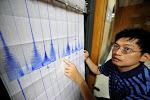
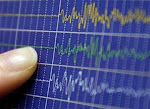
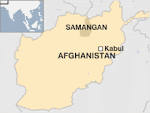






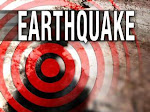
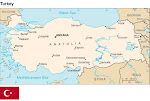
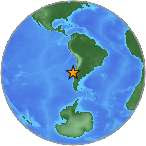




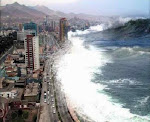

.jpg)


.bmp)
No comments:
Post a Comment